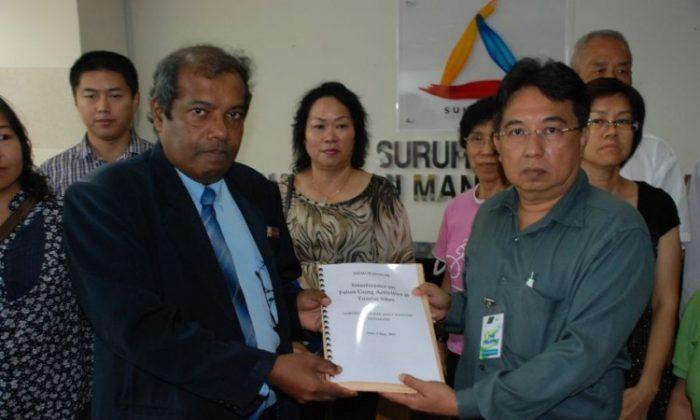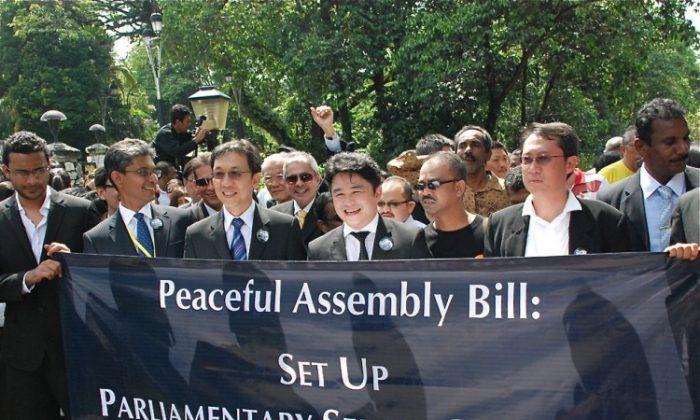KUALA LUMPUR, Malaysia—Science and technology has prevailed in the 21st century, but people nowadays are facing numerous serious diseases, such as kidney disease.
In Malaysia, there is a total of 25,000 kidney disease patients and the number is on the rise with 4 to 5 thousands new cases per year. For patients who have reached stage 5 of kidney failure, the only way to extend their life is through dialysis treatment or kidney transplant. Both are equally expensive for the patients and their family. Experts from Sunway Medical Centre talk with The Epoch Times about the kidney disease and its preventions.
Kidney Disease Is Expensive
Dr. Thiruventhiran, Consultant Nephoroglost in Sunway Medical Centre explained that kidney disease has 5 stages from stage 1 to stage 5.
“From stage 1 to stage 4, the treatment is medical. The doctor just treats the patients with medication. But once they reach stage 5, they need something called dialysis treatment. Dialysis treatment is an artificial form of treatment in which the patient’s blood is taken out from him, cleaned in a machine called haemodialysis machine and then put back to the patient,” said Dr. Thiruventhiran.
Dr. Thiruventhiran said in Malaysia, about 60 percent of patients who need dialysis have diabetes, which is largely lifestyle disease and preventable. About 5-10 percent kidney disease patients also suffer hypertension, which is also a lifestyle disease. Only 20-30 percent of cases are due to kidney disease itself.
He said once patient reaches the end stage of kidney failure, dialysis is mandatory to sustain life. Patients require the treatment three times per week and each session last for 4 hours. The total cost of one dialysis session is RM300-350 (US$98-$114), not including the cost of medications on top of that. Therefore, each dialysis patient must spend RM3,000-4,000 (US$978 - $1,300) per month.
“This is a huge burden to the patients. This is why the government is still the major provider of dialysis.
“Sixty percent of dialysis patients receive some form of funding from the government; 20 percent of patients are self-funded, meaning patients pay themselves or the funds come from a third party, such as their company or insurance. The government either provides dialysis in the government hospitals, which is free, or they provide subsidies to the NGOs of dialysis,” said Dr. Thiruventhiran.
Dr. Thiruventhiran summarized that there’s a huge lifestyle component to kidney diseases, like diabetes, hypertension, dietary intake, all these contribute to kidney disease. It is really important for people to be made aware that if you really want to take care of yourself, you need to take of all these lifestyle issues so that 10-15 years down the line, you don’t end up with kidney failure. Preventive measures are more important than anything else, he says.
Prevention Is Better Than Cure
“We are quite lucky in Malaysia, especially in terms of dialysis, our government is very supportive. They sponsor patients from the public sector. These government workers have this subsidy to come to a private hospital so they don’t need to wait. The government has been sponsoring SOCSO, another welfare association. In 10 years time, the number of our dialysis machines has increased from seven to 20,” said Ms. Ch’ng.
Ms Ch’ng said that Sunway Medical Centre is keen to raise public awareness about kidney disease. The hospital has education leaflets in the lobby to advise the young people eat healthily foods, nothing too sweet or too salty, drink more water, eat less junk food, and do more exercise.
“The message we want to send is that dialysis treatment is not a cheap solution. So take care of your kidneys, your health, and don’t become diabetic. If you are a diabetic in stage 1 or stage 2, you still can be cured with medication and good exercise and proper diet,” said Ms Ch’ng.
Take Care of Kidney Disease Patients
Ms. Hwang Ming Lan, senior nurse manager has been working for 10 years in Sunway Medical center’s haemodialysis unit. She said the hospital has about 60-70 permanent patients.
“Our main challenge is to keep our patients comfortable and safe. The other challenge is to guide and motivate the dialysis staff because each shift we can cater to 20 patients and at the same time we also have about 6-7 nurses. We need to ensure that the nurses are providing safe and good quality care to our patients,” said Ms. Hwang.
She said it is important to cultivate a close inter-personal relationship with the patients and by this, they are able to build a family-like atmosphere and this keeps up the morale of the patients and the staff.
“We do have a patient with us for more than 10 years since our dialysis center opened. We do visit them at their houses occasionally. We make sure they don’t feel pain, and can eat or drink as usual,” said Ms. Hwang.
Surprisingly, Ms. Hwang explained that there’s no intense pain involved during the dialysis except the initial needles, and patients are chair-bound for four hours. And probably nobody finds it too comfortable to be bound to a chair for hours, says Ms. Hwang.




Friends Read Free